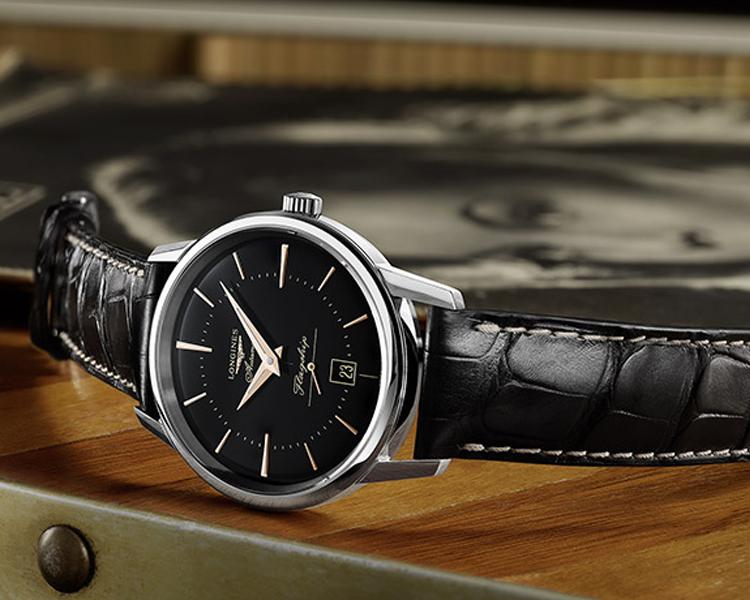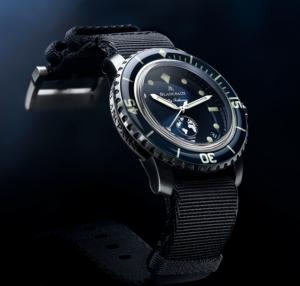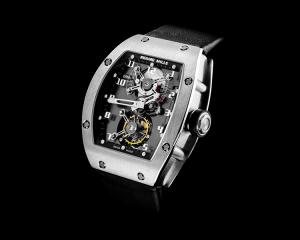Longines Heritage: Classic Watches Ready for the Future

Longines is a versatile brand with almost two centuries of experience on its sleeves. The brand is surely a giant not only in the western market but all over the world. In fact, just the name itself resounds with great models under its name. The brand’s $1.2 billion in annual sales definitely surprises a lot of people, especially with its fairly priced luxury watches. With its watches ranging from a few hundred dollars to a couple thousand, it still remains one of the best-selling watches to this day.
Under the Swatch Group, it’s easily a favourite among enthusiasts, collectors, and casual patrons of quality timepieces. Longines has various collections to boast and it’s fairly difficult to choose among its many offers. However, among all those, stands the quintessential collection of Longines watches—the Longines Heritage.
The Longines Heritage collection speaks volumes despite the mostly understated designs in the roster. The watches under this family indeed are classics but are definitely ready for the future. So, we’re going to break down the best Heritage watches in the market today. What makes them good? What makes them a classic?

Brief History of Longines
It would only be fair to begin talking about their heritage collection by tackling the brand’s history. After all, most Heritage watches are based on the first Longines watches to ever launch. And that dates back to 1832. About two centuries back, Auguste Agassiz founded Longines in Saint-Imier, Bern, Switzerland. Back then, the company had a different name — Raiguel Jeune & Cie. Along with Agassiz’s partners, lawyers Henri Raiguel and Florian Morel, the company sold pocket watches with crown wheel escapements. However, in 1846, Raiguel and Morel’s retirement left Agassiz as the sole company head. But thanks to his family’s connections in the United States, the company’s watches became a huge hit abroad.
Several years later, Agassiz’s nephew and economist Ernest Francillon joined the business. This, soon after, brought about great things for the company. Francillon got credit as the mastermind of various innovations that further the stamp that the brand made in the industry. After Agassiz’s passing, Francillon took over the leadership in the company.
After inaugurating the Es Longines (literally meaning ‘long meadows’) factory in 1867, Francillon brought in engineer Jacques David to spearhead operations at the new factory. David oversaw the production of the 20A as Technical Director. The 20A is a 20-line calibre with an anchor escapement, as well as a pendant winding and setting mechanism. This movement won an award at the Universal Exhibition in Paris in the same year. It was also in that moment when Longines began stamping their factory-made watches with the brand’s name and a winged hourglass.
One of the earliest watches made also dates back to 1867 with the Longines Serial Number 183. The watch was only discovered recently by Seiji Lépine, acknowledged by the brand on November 6, 2018.

An Industry Pioneer
In 1876, Francillon sent David to attend the Universal Exhibition in Philadelphia. He came as a delegate of the Inter-cantonal Industrial Society of the Jura. The ultimate goal was to learn and inspire new ideas and strategies from American horology. To record his learnings, David wrote a 108-page report. This would later become one of the most important documents in the watchmaking industry. It’s particularly regarded as the catalyst for the industrialisation of Swiss watchmaking. At the time, the Swiss industry worked under the établissage system. This meant that highly specialised independent workers come together to create a network of expert horologists. But with David’s report and Francillon’s proactivity, Longines pioneered mechanised production in the Swiss watchmaking industry.
Thus began the continuous production of the company’s watches. With that said, Longines began production of a simple chronograph movement called the 20H calibre, patented under watchmaker Alfred Lugrin’s name. During the late 19th century, the company invested heavily on the precision of their movements, with 20H being the first of many. They also further improved the 20H’s accuracy and produced its first movement for a certified chronometer, the 21.59 calibre. And it would only be the tip of the iceberg for Longines’ long history of innovation.
The 20th century would mark the historical takeover of Longines in the industry. With various designs such as the La Renommée and Weems, the classic Longines design soared. It was also during this era that the brand introduced the Flagship collection which, today, we can find under the Heritage collection.
The Longines Heritage Collection
Today, Longines references classic designs and the original beauty of the predecessors of its modern watches. But what lies beneath remains to be a cutting-edge revolution that proves to be a foundation in the company’s vision. The models under the collection are tributes to the pioneering spirit that launched the brand and inspired its designers in the early days. With that in mind, the Longines Heritage collection is the core of the brand’s timepieces based on expertise and aesthetic values. They exhibit the brand’s legacy and its continuous efforts to innovate. Moreover, it emphasises the brand’s unrelenting ability to pay homage through refined classic elegance and innovative new technology.
From Heritage Classic to the Longines Weems Second-Setting, these Heritage models will definitely take you back in time.
Longines Heritage Classic Sector
This Heritage Classic would easily be most people’s favourite. It has an understated design that would keep your look refined and classy. The watch’s inspiration dates back to 1934 with a cross-hair or sector design. This design not only represents precision but also adds class to its look. The automatic movement beats inside a 38.5mm and sits at about 12mm thick stainless steel case.
While its predecessor functions with a manual-wound movement, the L893.5 calibre powers the Heritage Classic. It’s the calibre number for the ETA A31.501 beating at 25,200 vph. This is also equivalent to 3.5 Hz. You might find this odd but it is, in fact, more common back then. But despite its slower frequency versus modern-day standards, the calibre affords a 64-hour long power reserve.
The design focuses on the crisp look and a surprising matching of straps. While other brands’ heritage collections rely on the usual brown and black straps, the Heritage Classic has a version in a blue leather strap with anthracite NATO (L2.828.4.73.2) as pictured above. It also comes with a black leather strap with a blue NATO (L2.828.4.73.0).
Longines Heritage Military
The Longines Heritage Military references aviation watches used by the British Royal Air Force during World War II. You’ll find similar watches from brands such as Omega. And just like Omega’s military watch, the Longines RAF watches don’t have a steel 60-second bezel. This is, of course, a response to the special orders delivered by the British Ministry of Defence (MoD) at the dawn of the war. In reference to the watch, Longines used one that was utilised by a radiotelegraph operator.
The Longines Heritage Military has the calibre L888.2 (ETA A31.L01) beating underneath its 38.5 mm case. It has 21 jewels and powers through at 25.200 vph. It also has 64 hours of power reserve just as the Classic does. However, its looks dictate more of its vintage design on its aesthetic. The vintage-style green calf leather strap and the cream dials, as well as the large black Arabic numerals, put the vintage in its appeal.
Longines Legend Diver Watch
In the 1950s, dive watches were starting to become in demand. Subsequently, Longines took on the challenge by producing the Longines Nautilus Skin Diver. This would later be the reference of the Heritage Skin Diver. Quickly enough, a bigger dive watch came in by the figure of Longines Diver reference 7042. With the Super Compressor principle in mind, the water pressure further seals the watch and guarantees its water-resistance. The first Heritage Legend Diver would lack the date window. This, of course, is now present with the re-edition of the model.
An ETA 2824-2 calibre movement powers the watch underneath its large 42mm black PVD-coated case. It has the quickest date to save yourself from the dreading crown-turning. As a dive watch, it also has a 300m water-resistance that can be used for scuba diving and deep-sea explorations. The dial, in addition, features legible numbers and strong lumes. Moreover, the inner rotating bezel makes for a user-friendly solution versus an external rotating bezel for dive timing. The watch is also available in either stainless steel, cow split leather, calf leather, or rubber strap (as illustrated on the picture above).
Longines Avigation Watch Type A-7 1935
A quirky addition to their many re-editions, the Avigation Watch Type A-7 1935 would be a fun watch to don. Its design element makes it easier for any pilot to navigate time easier. Moreover, it also helps pilots operate the chronograph quicker. This references a 1930s Type A-7 for the U.S. Army Air Corps. The case turned 40 degrees to the right with the crown located right at 12 o’clock. Non-enthusiasts would think that it was just a quirky way of designing a watch. However, it completely made sense as it followed the line of sight of a pilot when his arm is outstretched to the controls. It also makes sense as pilots often wear watches on the underside of their wrists. Where the Bigeye remained simple, the Watch Type A-7 flourished in personality.
The Calibre L788.2 automatic lies underneath its 41mm case beating at 28,800vph (4Hz). It has 54 hours of power reserve with various functions. Among those include central hours, minutes and date. It also has a chronograph second and 30-minute counter. The refreshing details of the watch surely don’t compromise its functions.
Longines Heritage 1945
You can guess where the Longines Heritage 1945 got its name from. In 2017, the company re-editioned a 1945 model with almost the same look with new distinguishable features. The previous version was 37mm, manually-wound watch with a significantly more balanced dial than the new version. However, as a re-edition, the 2017 version is a faithful one at best. Only that it now has a 40mm dial and automatic movement. The sub-seconds indicator is up a few millimetres up to make way for an “automatic” inscription. The dial changed to show a “brushed copper” look that would be distinguishable from the original creamy dial.
Longines Flagship Heritage
In 1957, Longines launched the Flagship collection. It’s a collection of very understated dress watches that at the time was very in demand. It was a big hit back then as it would only make sense to reference for the Flagship Heritage. It picked up a lot of visual cues from its predecessor without having to sacrifice the modernity of it all. Moreover, it has a functionality that meets the 21st century standards despite its inspiration’s roots in the previous century. The Longines Flagship Heritage should make a decent dress watch of today with 38.5mm of diameter and 10.25mm thickness.
The silver dial falls on a lighter category but adds a vintage touch to its feel. It also has chamfering on various places such as the lugs that make a refined addition to its appeal. The hour and minute hands only have a thin strip of lume which would still be just as functional when necessary. In addition to the symmetry, the date window is at 6 o’clock to bring weight to its lower side with the logo on the upper.
Longines Lindbergh “Hour Angle” Watch
As a celebration of the 90th anniversary of Charles Lindbergh’s first solo transatlantic flight, Longines produced a limited-edition Lindbergh timepiece. The Longines Lindbergh “Hour Angle” watch is an iconic innovation in horology. After the successful flight in 1927, Lindbergh collaborated with Longines in crafting the Hour Angle watches. The aviation watch had an inner rotating ring on the dial with the bezel having a scale of up to 15. Now, the dial may seem a bit too busy compared to the Weems watch, but its function appeals to many people.
Longines Weems Second-Setting Watch

The Weems Second-Setting Watch is closely related to the aforementioned Lindbergh “Hour Angle” watch. It is a simpler and more stripped-down version of the Lindbergh watch. It’s inspired by the invention of Captain Philip can Horn Weems that taught Lindbergh to navigate with the use of stars. Aside from the self-winding calibre and rotating central dial, it also has a device that was designed by Weems. This device allows the synchronisation of the second hand with the use of radio signals. Underneath the 47.5mm case is the mechanical calibre L699 with 46 hours of power reserve.
Longines Twenty-Four Hours
Another of Longines’ many successful recreations is the Twenty-Four Hours watch. This watch is a face-lifted version of the 1950s three-hand watch ordered by Swissair for its pilots form Longines. The watch has a great mixture of historical styling references and modern-day technology utilisation. However, compared to the original, there’s still a lot of improvements made to the re-edition.
Aside from the bigger aperture, it also now has a higher contrast on the dial. Moreover, the hands are now in stainless steel, a diversion from the previous model’s gold hands. But what remains the same is the 24-hour scale. Rightfully so, the watch has an oversized 47.50mm case. In addition, through a pusher at 4 o’clock, you’ll be able to open the cover and reveal its functioning Longines L704.2 automatic movement.
Longines Conquest Heritage
The Conquest collection first came out in the 1950s. It had a very simple, understated design that begged to be noticed among crowds despite its casualty. It was also just as elegant. And while most re-editions of Longines tend to lean towards giving old models a facelift, they surely held back a lot with the Conquest. It’s still the same classy look, only with a modern mechanism. The new Longines Conquest Heritage comes in either black or silver dial but it’s the gold markers that stand out more with the black dial. With the L633 calibre, it has 38 hours of power reserve.
A Classic Reinvention
The Longines Heritage will always stun with their continuous improvements to its classic models. This collection strengthens the brand’s legacy all while proving their modern-day competitive enthusiasm. These watches further prove that the company is here to stay and will remain to be a huge competitor in the industry.
Need more heritage watches to keep you on that classic mood? Check out our 5 coolest picks from the Tudor Heritage Chrono collection.


